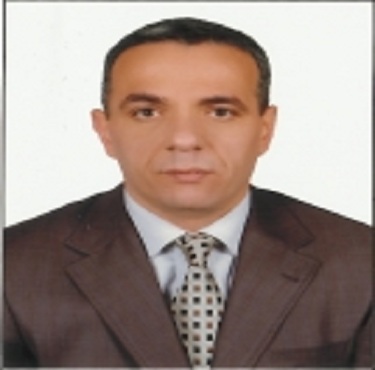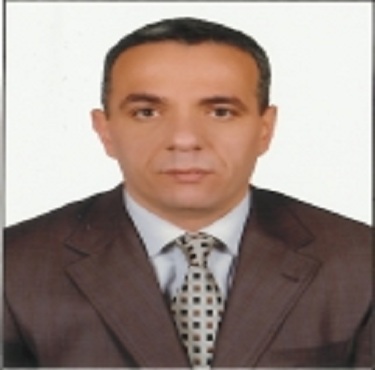
Food Technology 2019

Theme: Food Science Research and Advancement
4th International Conference on Food Processing and Technology will be held during March 20-21, 2019 at Amsterdam, Netherlands. Food Technology Conference will focus on the theme “Food Science Research and Advancement”. It is a worldwide pioneer in creating astounding meetings, gatherings, workshops and symposia in every single real field of science, innovation and prescription. Food Technology Conference is intended to accumulate driving judgment skills to a stage on Food Innovation and its encouragement. It is the exceptional guide to pass on all-inclusive eminent colleges in the bureau of nourishment science and innovation, researchers, theoretical scientists, sustenance analysts, researchers and so forth. Food Technology Meeting is comprised to offer comprehensive sessions that address current issues in the field of Food Technology, i.e. Food Science & Technology, Food & Nutrition, Food Microbiology, Food Safety, Chemical Analysis of Food, Food Preservation and Packaging, Food Law and Economy, Dairy Science and Technology.
Target Audience
-
Food Professional from Manufacturing, Retail and Food Service Industry
-
Food Auditor and Nutrition Trainer or Consultant
-
Owner or Manager of Food Business
-
Chef or Food & Beverage Manager working in Food Service Sector
-
Food Trader or Gulfood Exhibitor
-
Food Importer, Exporter or Nutrition Supplements
-
Government Food and NutritionControl or Health Official
-
Member of the Academia, Research Scholar, Student
-
Representative of a Consumer Group
Importance
This meeting will be a significant and vital stage for moving worldwide and interdisciplinary trade at the bleeding edge of sustenance look into. Through the span of 2 days, universally famous speakers will portray how their examination travel has created in light of contemporary difficulties: motivational and imaginative lessons in sustenance inquire about. The going to specialists and industry accomplices will likewise give an awesome systems administration encounter. The arrangement of talks, notice introductions, workshops, dialogs and systems administration occasions will keep members occupied with learning and making new associations at Food Technology 2019. The Food Technology Conference will unite academicians, scientific experts, researchers, dietitians, nutritionists, engineers, technologists from everywhere throughout the world, and we trust that you will accept this open door to go along with us for scholarly trade and visit the city of Amsterdam.
The Scope
The scope of 4th International Conference on Food Processing and Technology will unite agents from universal and legislative offices, the scholarly and Industrial research group, non-administrative associations and the business and specialized pioneers in the sustenance business and its store network to talk about, face off regarding and give initiative on handling a scope of genuine difficulties that face the trustworthiness of our worldwide Food supply framework. The Food Technology Workshop will highlight various abnormal state vital introductions on key issues by globally perceived pioneers. It will likewise put a firm accentuation on bridling the aggregate learning and experience of the researcher to address these difficulties through the detailing of strategy suggestions to governments and a Conference Communique.. You're welcome to submit abstracts for presentation. The core aim of Food Technology conference is to provide an opportunity for the delegates to meet, interact and exchange new ideas in the various areas of Food Processing and Technology.
Why Amsterdam, Netherlands?
Amsterdam is the capital and most populous municipality of the Netherlands, known for its artistic heritage, elaborate canal system and narrow houses with gabled facades, legacies of the city’s 17th-century Golden Age. As the commercial capital of the Netherlands and one of the top financial centres in Europe, Amsterdam is considered an alpha world city by the Globalization and World Cities (GaWC) study group. The city is also the cultural capital of the Netherlands. Many large Dutch institutions have their headquarters there, and seven of the world's 500 largest companies, including Philips and ING, are based in the city.
Session 1: Food Science & Technology
The devotion of sustenance science and advancement specialists to driving the examination of sustenance, ensuring a protected and plentiful nourishment supply, and adding to more useful people wherever is key to that improvement. Sustenance scientists and technologists are adaptable, interdisciplinary, and network arranged pros in a calling at the crossing point of consistent and mechanical changes. As the sustenance system has drastically changed, from one in view of family Food age on particular farms and sustenance preservation to the front line game plan of today, by far most are not related with their sustenance nor are they alright with cultivating creation and Food manufacturing proposed for better nourishment wellbeing and quality".
Food Processing Conference | Food Technology Workshop | Food Processing Meeting | Food Technology Congress | Food Microbiology Seminar | Food Safety Congress
Session 2: Genetically Modified Food
Genetic modification of food is not new - For centuries, food crops and animals have been altered through selective breeding. While genes can be transferred during selective breeding, the scope for exchanging genetic material is much wider using genetic engineering. In theory, genetic engineering allows genetic material to be transferred between any organism, including between plants and animals. For example, the gene from a fish that lives in very cold seas has been inserted into a strawberry, allowing the fruit to be frost-tolerant.
Food Processing Conference | Food Technology Workshop | Food Processing Meeting | Food Technology Congress | Food Microbiology Seminar | Food Safety Congress
Session 3: Food Chemistry
It is like organic chemistry in its principle parts, for example, sugars, lipids, and protein, yet it likewise incorporates regions, for example, water, vitamins, minerals, chemicals, food added substances, flavors, and hues. This train additionally includes how items change under certain nourishment preparing procedures and routes either to upgrade or to keep them from happening. A case of upgrading a procedure is support aging of dairy items with microorganisms that change over lactose to lactic corrosive; a case of keeping a procedure would stop the searing on the surface of newly cut Red Delicious apples utilizing lemon juice or other acidulated water.
Food Processing Conference | Food Technology Workshop | Food Processing Meeting | Food Technology Congress | Food Microbiology Seminar | Food Safety Congress
Session 4: Food Safety, Security and Control
Food Safety and security is a condition identified with the supply of sustenance, and people's entrance to it. Worries over nourishment security have existed all through history, the FAO announced that just about 870 million individuals were constantly undernourished in the years 2010– 2012. This speaks to 12.5% of the worldwide populace, or 1 of every 8 individuals. Higher rates happen in creating nations, where 852 million individuals (around 15% of the populace) are incessantly undernourished. The UN noticed that around 2 billion individuals don't expend an adequate measure of vitamins and minerals.
Food Processing Conference | Food Technology Workshop | Food Processing Meeting | Food Technology Congress | Food Microbiology Seminar | Food Safety Congress
Session 5: Food Preservation and Packaging
The global revenue of preservation, packaging and shelf life extenders was $428.1 billion in 2011 and reached nearly $442.3 billion in 2012. The market is expected to rise at a CAGR of 3.3% and reach $520.9 billion by 2017.
Food Processing Conference | Food Technology Workshop | Food Processing Meeting | Food Technology Congress | Food Microbiology Seminar | Food Safety Congress
Session 6: Food and Beverages Processing
Business and associations that deliver, oversee, manage, and disperse food and beverages involve the sustenance and drink generation industry. The worldwide handled sustenance and drink market will experience huge change throughout the following year because of the immediate effect of key Mega Trends including the rise of new plans of action that will change nourishment retail, the effect of evolving economics, associated eating in the subjective time, and the proceeded with ascent of "opportunity sustenance." Valued at $4.601 trillion of every 2016, incomes are relied upon to reach $4.675 trillion by 2017 given a year-on-year development of 1.6%, in spite of the fact that income direction fluctuates broadly by item section and geology.
Food Processing Conference | Food Technology Workshop | Food Processing Meeting | Food Technology Congress | Food Microbiology Seminar | Food Safety Congress
Session 7: Food Microbiology
Bacteria are the most important microorganisms to the food processor. Most are harmless, many are highly beneficial, some indicate the probable presence of filth, disease organisms, spoilage and a few cause disease. In 2016, the global food microbiology market totaled 1.14 billion tests, up from 966 million tests in 2013 (and 738 million tests in 2008).
Food Processing Conference | Food Technology Workshop | Food Processing Meeting | Food Technology Congress | Food Microbiology Seminar | Food Safety Congress
Session 8: Foodborne and Nutritional Disorders
Nutritious food is a basic necessity of life, and failure to obtain sufficient calories, macronutrients (fats, proteins, carbohydrates), and micronutrients (vitamins, minerals) can result in illness and death. While malnutrition and hunger are typically problems in the developing world, the United States and other developed countries still have significant populations affected by insufficient food resources and under-nutrition. Food can also be a source of foodborne illnesses, resulting from eating spoiled food or food contaminated with microbes, chemical residues or toxic substances. The potential effects of climate change on foodborne illness, nutrition, and security are mostly indirect, but on a global scale, can result in large numbers of populations affected.
Food Processing Conference | Food Technology Workshop | Food Processing Meeting | Food Technology Congress | Food Microbiology Seminar | Food Safety Congress
Session 9: Food Waste and Recycling
As per the "Waste Control Act", which was made to accumulate the important premise information for the foundation of waste administration arrangements, current data on squander age and treatment is gathered and routinely refreshed, including the measures of waste produced by type, local circulations, and changes in transfer designs. A "National Waste Statistics Survey" is led like clockwork, and a "National Waste Generation and Treatment" and a "National Designated Waste Generation and Treatment" are directed every year.
Food Processing Conference | Food Technology Workshop | Food Processing Meeting | Food Technology Congress | Food Microbiology Seminar | Food Safety Congress
Session 10: Aqua, Sea and Dairy Food
Aquaculture "is understood to mean the farming of aquatic organisms including fish, molluscs, crustaceans and aquatic plants. Farming implies some form of intervention in the rearing process to enhance production, such as regular stocking, feeding, protection from predators, etc. Farming also implies individual or corporate ownership of the stock being cultivated. The reported output from global aquaculture operations in 2014 supplied over one half of the fish and shellfish that is directly consumed by humans; however, there are issues about the reliability of the reported figures. Further, in current aquaculture practice, products from several pounds of wild fish are used to produce one pound of a piscivorous fish like salmon.
Food Processing Conference | Food Technology Workshop | Food Processing Meeting | Food Technology Congress | Food Microbiology Seminar | Food Safety Congress
Session 11: Food Flavors
Flavorings are extreme arrangements which are added to nourishments with the end goal to bestow taste or potentially smell. These nourishment flavors are utilized in little sums and are not proposed to be devoured alone. There are sure normal sustenance flavors which are gotten from herbs, flavors and substances having a solely sweet, sharp or salt taste. These common sustenance flavors are excluded in the meaning of flavorings for administrative purposes.
Food Processing Conference | Food Technology Workshop | Food Processing Meeting | Food Technology Congress | Food Microbiology Seminar | Food Safety Congress
Session 12: Nutraceuticals & Nutrition Supplements
The global sports nutrition market accounted for $28.37 billion in 2016 and is expected to reach $45.27 billion by 2022, growing at a CAGR of around 8.1% between 2017 and 2022, according to a new report from Zion Market Research. The nutraceuticals industry continues to be in a healthy position overall and future forecasts are promising. For example, Euromonitor International expects the U.S. vitamin and dietary supplement market to increase by 53% to $28.7 billion by 2021.
Food Processing Conference | Food Technology Workshop | Food Processing Meeting | Food Technology Congress | Food Microbiology Seminar | Food Safety Congress
Session 13: Food and Obesity
Weight reduction and eating regimen administration is a test for many individuals around the globe. All inclusive, more than 1 billion individuals are over a perfect weight. Notwithstanding the negative social impacts being overweight has on an individual, the wellbeing impacts can be savage. The influences weight has on hazardous or life changing sickness are obliterating. Illnesses, for example, diabetes, coronary illness, and disease all have connections to being overweight or corpulent. Expanding training endeavors, open weight administration designs and sustenances, and a developing want to be physically attractive have energized this market in later years. More than 100 million individuals in the United States are effectively associated with a weight reduction or weight administration design at any one time consistently. This proposes an interest for items and administrations which will proceed for quite a long time to come.
Food Processing Conference | Food Technology Workshop | Food Processing Meeting | Food Technology Congress | Food Microbiology Seminar | Food Safety Congress
Session 14: Food fermentation
The process of anaerobic decomposition of organic substances (primarily carbohydrates); it occurs under the influence of microorganisms or the enzymes secreted by them. In the course of fermentation, the energy needed for the vital activity of the microorganisms is released as a result of conjugated oxidation-reduction reactions, and chemical compounds used by the microorganisms for biosynthesis of amino acids, proteins, organic acids, fats, and other body components are formed. At the same time, there is an accumulation of the end products of fermentation. The different types of fermentation include alcoholic, lactic, butyric-acid, propionic-acid, acetone-butyl alcohol, and acetone-ethyl alcohol fermentation.
Food Processing Conference | Food Technology Workshop | Food Processing Meeting | Food Technology Congress | Food Microbiology Seminar | Food Safety Congress
Session 15: Food and Nutrition
Food has been an essential bit of our world. Affirmation of nutrition ensures advancement in children and youth, keeps up awesome prosperity all through life. Supplements are sections of sustenance required for body in adequate wholes for genuine improvement, augmentation and driving customary life. Sustenance joins the system from eating sustenance to its use in various components of body. The investigation of sustenance oversees what supplements we require, in what sum, how to get them and how the body utilizes them. Adequate, perfect and awesome sustenance exhibits the ideal total and degree of supplements for fitting use for achieving most hoisted measure of physical and mental prosperity. The use of sustenance in the body incorporates three methods – handling, absorption and utilization of supplements in the body.
The 4th International Conference on Food Processing & Technology to be held at Amsterdam, Netherlands during March 20-21, 2019, hosted by Meeting International through the theme “Food Science Research and Advancement", conference will explore the advances in Food Science, Technology, Dietician, Nutrition and Chemistry etc. It will be a premier event that brings together a unique and International mix of experts, researchers and decision makers both from academia and industry across the globe to exchange their knowledge, experience and research innovations to build a world Food Scientist & Nutritionist meet.
Importance of Conference:
Food Technology Conference offers a fantastic opportunity to meet and make new contacts in the field of Food Processing & Technology, by providing collaboration spaces and break-out rooms with tea and lunch for delegates between sessions with invaluable networking time for you. It allows delegates to have issues addressed on Food Science by recognized global experts who are up to date with the latest developments in the Food Technology field and provide information on new techniques and technologies. This International Food Technology conference will feature world renowned keynote speakers, plenary speeches, young research forum, poster presentations, technical workshops and career guidance sessions.
Research and Business Value:
1. Globally:
The global food and beverage industry is growing at 3.5% a year and is expected to be worth more than US$7 trillion by 2014. Key trends for new product development are in health, convenience, naturality and sustainability. New foods based on fruits and vegetables fulfill many of the demands of the premium consumer. The intrinsic “health halo” of natural produce make ingredients derived from fruits and vegetables highly sought after in the global marketplace. The market for functional foods – foods that offer benefits beyond basic nutrition – is one of the fastest growing segments of the global food industry. Foods and beverages that offer validated health claims account for around US$25 billion of global sales, he wider functional food market, including rehydration and sports drinks and foods with softer health claims, is estimated to be worth around US$200 billion.
2. North-American Region:
The prevention of diet-related diseases is one of the new societal challenges of the 21st century. In October 2011, the world population passed the 7 billion mark. Such growth will put a massive strain on the global food supply. These factors alone make the production and distribution of food a critical issue for the 21st century. The organic food industry is one of the fastest growing sectors of U.S. agriculture. Consumer demand for organic food has continued to grow at a steady pace of 20% or more annually since the 1990s. About 73% of conventional grocery stores and nearly 20,000 natural food stores carry organic products, accounting for approximately 2.5% of total food sales in the United States. Domestic sales estimates of organic foods are $17 billion (all amounts are in U.S. dollars) for 2006, with 39% of those sales for fruit and vegetables (Organic Trade Association 2006). The current demand for organic produce is increasing faster than supply, resulting in expanding trade gaps between imports and exports. The organic sector of the U.S. agricultural system is demanding increased attention from producers, retailers, consumers, and policy makers interested in environmental and health issues within the food system.
3. Europe:
The major manufacturing hubs in the globe is Europe which constitute the majority share in the food flavors and enhancer market along with North America. European market is a mature market and has several regulatory bodies to regulate stringently the use of food flavors and enhancers, thereby taking care of the consumers of the nations. Germany constitutes the major share having 24% followed by the UK (23%), Spain (10%), Netherland (5%) and Italy (9%). $ 823 million US dollar is the market size by value of the synthetic flavor and $ 755.65 million US dollar is the market size by value of the natural in the year 2014.
4. Asia pacific:
Asia Pacific is a huge and increasingly influential market in the supply of food and beverage ingredients. As well as accounting for 35% of global value added ingredient supply in this category, it is also a melting point of diverse trends and influences. In 2012, Asia Pacific accounted for 35% of global use of value-added food and drink ingredients, equivalent to almost 8.5 million tones out of a global total of 24.2 million tones. Asia Pacific is also one of the fastest growing regions, with a forecast CAGR of 4% over 2012-2017, behind only the Middle East and Africa, with 5%. This means that by 2017, Asia will have increased its share of the global total to 38%.
Universities & Research Institutions:
Universities in USA
University of California- Davis, Cornell University- New York, Harvard University- Massachusetts University of Massachusetts- Amherst, University of Wisconsin- Madison, University of Minnesota- Twin Cities, Rutgers, the State University of New Jersey- New BrunswickUniversity of Illinois- Champaign, Michigan State University- Michigan, Ohio State University-ColumbusIowa State University- Iowa.
Research Institution in USA
Government of Antigua and Barbuda- Antigua and Barbuda, Association of Dietitians and Nutritionist-Dietitians- Argentina, Ministry of Health- Bahamas, National Nutrition Centre, Ministry of Health- Barbados, Ministry of Health- Belize, Secretariat of Health Care, Ministry of Health- Brazil, Institute of Nutrition and Food Technology (INTA)- Chile, Instituto Colombiano de Bienestar Familiar- Colombia, Ministry of Health- Costa Rica Institute of Nutrition and Food Hygiene- Cuba, Health Promotion Department, Ministry of Health and Social Security- Dominica, Ministry of Public Health- Dominican Republic, Nutrition Department, Ministry of Health- El Salvador.
Research Institutions in Europe
Ministry of Health- Albania, Ministry of Health- Austria, Federal Public Service Health, Food Chain Safety and Environment- Belgium, Institute of Public Health of Federation of Bosnia and Herzegovina- Bosnia and Herzegovina, Ministry of Health- Croatia, Ministry of Health- Cyprus, Ministry of Food, Agriculture and Fisheries- Denmark, National Institute for Health Development- Estonia, National Nutrition Council- Finland, Ministry of Health- France.
Universities in Asia
China Agricultural University- China, Zhejiang University- China, Jiangnan University- China, Nanjing Agricultural University- China, South China University of Technology- China, Northwest A&F University- China, University Putra Malaysia- Malaysia, National Taiwan University- Taiwan Eoul National University- South Korea, University of Tehran- Iran, National Chung Hsing University- Taiwan,Huazhong Agricultural University- China, University of Tokyo- Japan.
Research Institutions in Asia
National Health and Medical Research Council- Australia, Endocrine and Metabolic Disorders- Bangladesh, Chinese Nutrition Society- China, Ministry of Health- Fiji, National Institute of Nutrition- India, Japan Ministry of Agriculture, Forestry and Fisheries, Food Safety and Consumer Affairs Bureau- Japan, Ministry of Health- Malaysia, Nutrition Research Department, Ministry of Health- Mongolia, Ministry of Health and Population- Nepal, Ministry of Health- New Zealand, Food and Nutrition Research Institute- Department of Science and Technology.
Universities in Middle East
American University in Cairo- Egypt, Cairo University- Egypt, Ain Shams University- Egypt, Alexandria University- Egypt, Mansoura University- Egypt, Universities in Israel- Universities in Israel, Hebrew University of Jerusalem- Israel, Technion-Israel Institute of Technology- Israel, el Aviv University- Israel, American University of Beirut (AUB) - Lebanon, Université Saint-Joseph de Beyrouth (USJ)- France, Universities in Qatar- Qatar.
Research Institutions in Middle east
Ministry of Health and Medical Education- Iran, Ministry of Health- Oman, Supreme Council of Health- QataR, Association in USA, ASN (American Society for Nutrition), American Nutrition Association, USDA (United States Department of Agriculture, Eat right (Academy of Nutrition and Dietetics), NS75 (The Nutrition Society), World Public Health Nutrition Association, Academy of Nutrition and Dietetics.
Association in Europe
- FenS (Federation of European Nutrition Societies)- Dublin
- Society of nutrition and food science- Germany
- EUFIC (European Food Information Council)- Belgium
- IUNS (International union of nutritional sciences- UK
- Food and Agriculture Organization of the United Nations- Italy
Association in Asia
- The parental and enteral nutrition society of asia (PENSA)- Korea
- Asia pacific clinical nutrition society- China
- National Institute of Nutrition- India
- Federation of Asian Nutrition Societies (FANS)- Japan
Future Prospect:-
Worldwide advance in enhancing human nourishment will proceed, yet in numerical terms it will be moderate. Indeed, even by 2030, countless destitute individuals will stay under-supported unless nearby nourishment creation is given higher need and disparity of access to sustenance is diminished. Be that as it may, the lower frequency of undernourishment will make the issue more tractable through national and worldwide arrangement mediations advance in nourishment have been huge.
Flexibility from hunger isn't just a fundamental human right: it is basic for the full happiness regarding different rights, for example, wellbeing, training and work, and everything that streams from these.The world has gained huge ground in raising sustenance levels in the course of recent decades. These levels are most usually measured as far as kilocalories per individual every day. Individuals in creating nations require between 1 720 and 1 960 kcal every day for basal digestion and light activity.World normal nourishment utilization per individual has ascended by right around a fifth, from 2 360 kcal per individual for every day in the mid-1960s to 2 800 kcal per individual for each day today.The most recent World Bank appraisal of future monetary development is less hopeful than its forerunners, however despite everything it anticipates an ascent of 1.9 percent a year in per capita salaries in the vicinity of 2000 and 2015, higher than the 1.2 percent found in the 1990s. What will happen to the frequency of destitution under this general monetary situation is of extraordinary significance to sustenance security since neediness and craving are nearly related. The World Bank has assessed the ramifications of its financial development projections for neediness decrease by the year 2015. They are that:
- It is possible to achieve the goal of halving the proportion of people living in absolute poverty - defined as an income below US$1 per day - by 2015, over the 1990 level.
- However, it is unlikely that the number of poor people can also be halved. This will decline from 1.27 billion in 1990 to 0.75 billion in 2015.
- Much of the decline will be due to development in East and South Asia. Indeed, about half of the decline of 400 million projected for East Asia has already occurred.
- Only in sub-Saharan Africa, where incomes are expected to grow very slowly, are the numbers living in poverty expected to rise, from 240 million in 1990 to 345 million in 2015. By then, two out of five people in the region will be living in poverty.Average nutrition will improve, but under-nourishment will fall only slowlyIn the light of these changes in population and incomes, progress in improving nutrition is expected to continue, though more slowly than in the past. Average per capita food consumption in developing countries is projected to rise by 6.3 percent, from 2 680 kcal in 1997-99 to 2 850 kcal in 2015. This is a third of the rise achieved between 1974-76 and 1997-99.The slowdown is occurring not because of production limits but because many countries have now reached medium to high levels of consumption, beyond which there is less scope than in the past for further increases. Huge countries such as China, where per capita consumption rose from 2 050 kcal per day in the mid-1970s to over 3 000 kcal per day today, have already passed the phase of rapid growth. More and more countries will be attaining such levels over the projection period.
Conclusion:-
In numerous nations, including a portion of the more crowded ones, the relative predominance of undernourishment will decrease essentially with this approach. Less nations than at present will have elevated amounts of undernourishment, none of them in the most crowded class. The issue of undernourishment will have a tendency to end up plainly lesser as far as both supreme numbers influenced and, considerably more, in relative terms, subsequently it will turn out to be more tractable through arrangement mediations, both national and international.Now that you have all the data you require on eating healthy, the most vital activity step you can do is to keep up this direction for living however much as could be expected. Post purposes when you require inspiration from others. Keep a journal of your sustenance decisions on your blog or diary. Converse with other individuals when you are feeling enticed to enjoy undesirable pastries.
Reference:-
- http://www.ibisworld.com/industry/nutritionists-dietitians.html
- http://www.strategyr.com/MarketResearc/Sports_and_Fitness_Nutrition_Supplements_Market_Trends.asp(global industry analyst)
- Global Nutrition and Supplements Market: History, Industry Growth, and Future Trends by PMR release/2015/01/27/700276/10117198/en/Global-Nutrition-and-Supplements-Market-History-Industry-Growth-and-Future-Trends-by-PMR.html)
- Food Science & Technology
- Genetically Modified Food
- Food Chemistry
- Food Safety, Security and Control
- Food Preservation and Packaging
- Food and Beverages Processing
- Food Microbiology
- Food borne and Nutritional Disorders
- Food Waste and Recycling
- Aqua, Sea and Dairy Food
- Food Flavors
- Nutraceuticals & Nutrition Supplements
- Food and Obesity
- Food fermentation
- Food and Nutrition
- Journal of Food and Nutritional Disorders
8 Organizing Committee Members
10 Renowned Speakers
Osama Ibrahim
BIO INNOVATION,LLC
USA
Isabelle Plasmeijer
ISA POWER
Netherlands
Ester Mpandi Khosa
Allied Health Professionals Council
Zimbabwe
Virginia E. Melo Ruiz
Autonomous Metropolitan University
Mexico
Jirapa Pongjanta
Rajamangala University of Technology
Thailand
Mustafa Akcelik
Ankara University
Turkey
Aijaz Soomro
Sindh Agriculture University
Pakistan
Zilha Asimovic
University of Sarajevo
Bosnia and Herzegovina
Karina Sanchez Herrera
Universidad Autonoma Metropolitana unidad Xochimilco
Mexico
Mohd. Abul Kalam Azad
Milk Vita
Bangladesh







































































































































